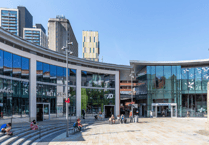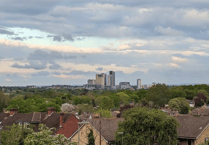TWO thousand panels on the Hilton Hotel building in Victoria Square will require additional fixings to ensure the cladding is “safe”, Cllr Ayesha Azad, the leader of Woking Borough Council, said this week.
Cllr Azad had previously told a full council meeting that: “To ensure public safety, Prater [the provider of the cladding system] has commenced the installation of additional temporary fixings to over 3,000 panels.”
However, Prater has since completed its assessment of the temporary fixings required to ensure the cladding is “safe” and has confirmed that fewer panels than originally estimated require the fixings.
“There are approximately 4,000 panels on the hotel and around 2,000 panels require the extra fixings to make them safe, rather than 3,000,” Cllr Azad said. “The other 2,000 will not require remedial work.
“SRM and Prater have confirmed that they expect to complete that work by the end of January, weather permitting, and they are working together on a long-term permanent solution. SRM is responsible for rectifying this issue under its design and build contract.”
A spokesman for SRM added: “We are working closely with the hotel cladding team. Additional equipment is being introduced to provide access to multiple work faces for installing the fixings.”
An exclusion zone has been in place around the development, closing part of Victoria Way and forcing road diversions around the town centre, since several exterior panels fell off the new building on October 20. Victoria Way will remain closed into next month at least.
When asked by the News & Mail this week about the “temporary” nature of the additional fixings, specifically whether they would have to be revisited, Cllr Azad said: “When the panels fell off the Hilton Hotel building, the council’s contractor prioritised safety by closing the road and undertaking strengthening work based on the immediate examination of the fallen panels and their fixings, pending a further detailed report.
“This involved installing extra fittings onto each of the panels, beginning with those higher up and most at risk because of their position experiencing the same failure as those that fell.
“It was also important that the impact of those extra fittings be assessed to see if there was an implication for the medium-term life of the panels that was not immediately apparent.
“The contractor is still in the process of finalising a permanent fix for the problem, but this temporary measure is judged to be sufficient to secure the panels and allow the road to be re-opened as soon as possible.”
The 2,000 temporary fixings will be assessed to determine whether they have to be revisited.
Neither SRM nor Prater has offered any explanation for the falling panels, despite multiple approaches to both.




